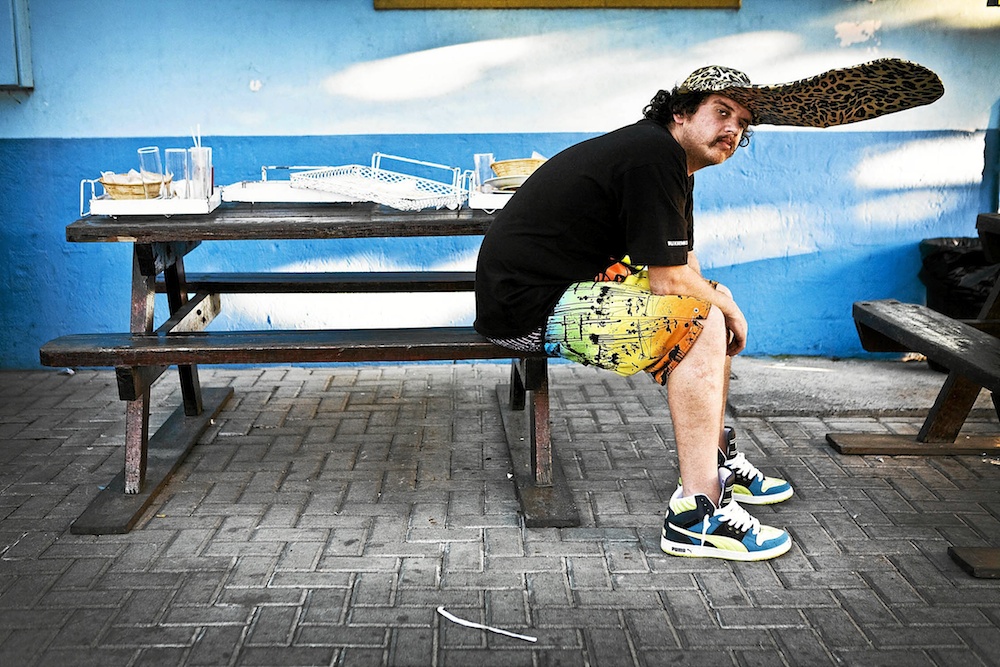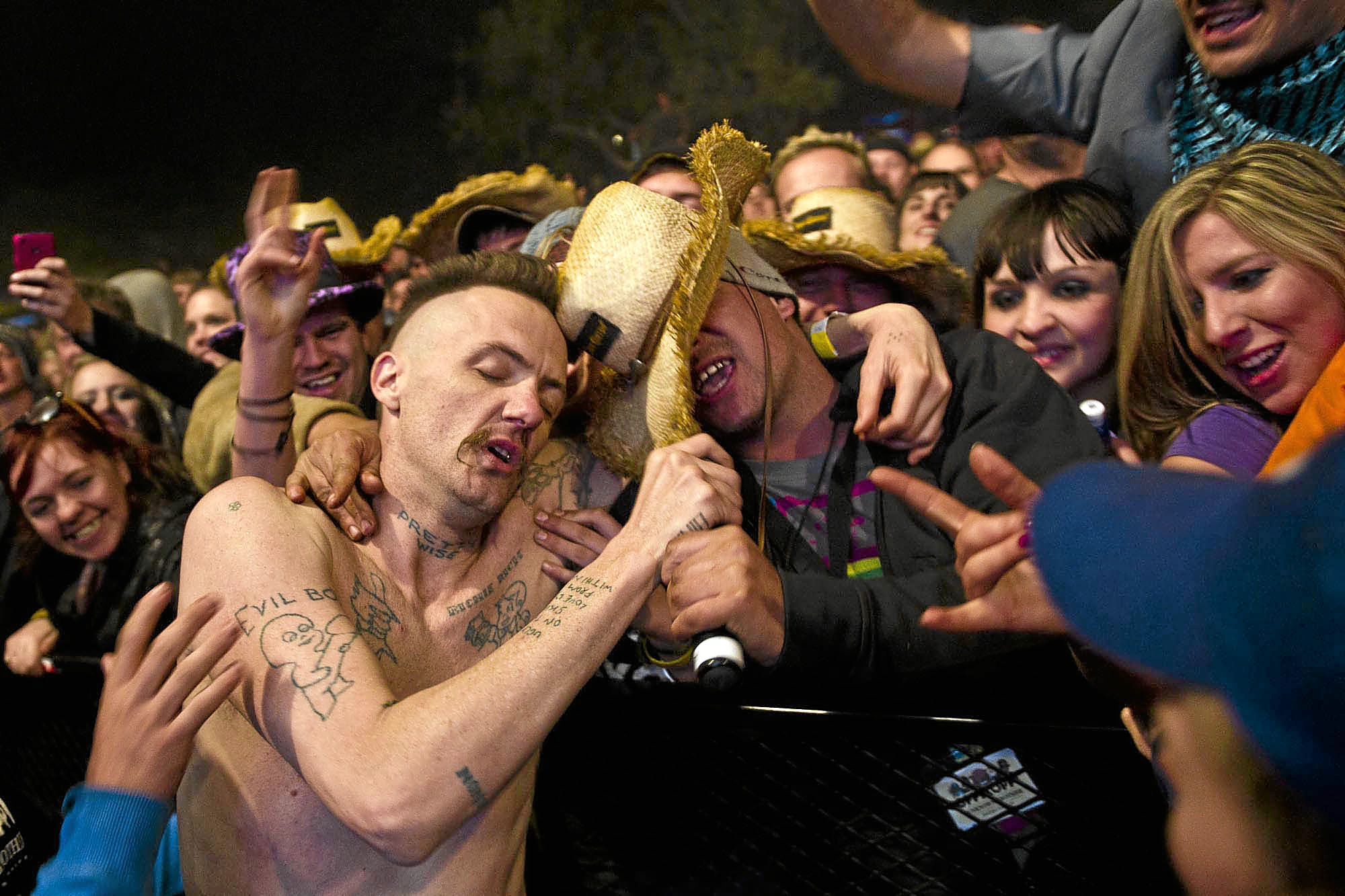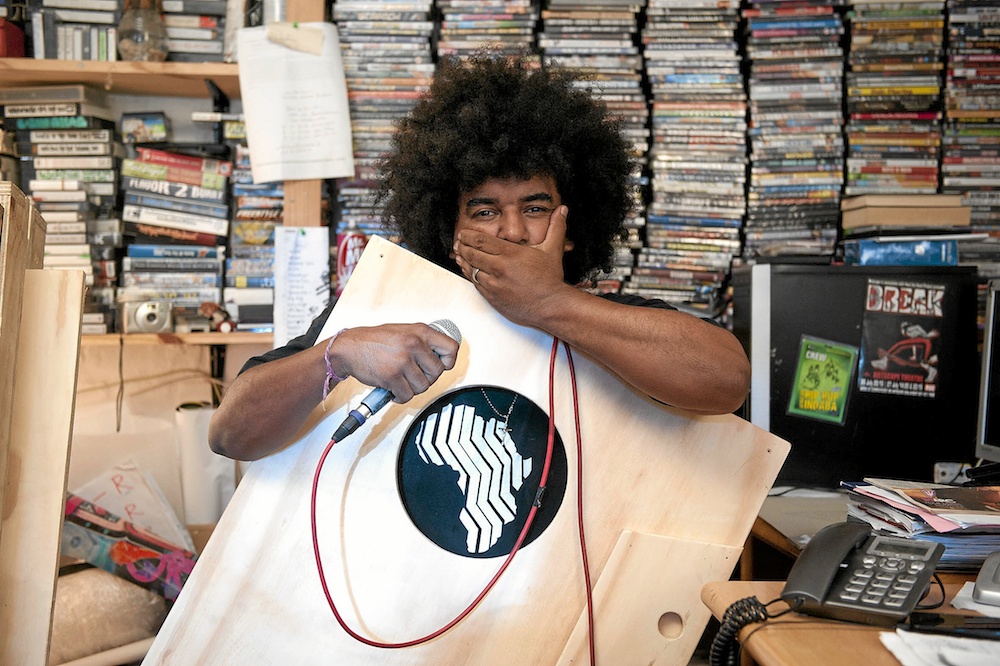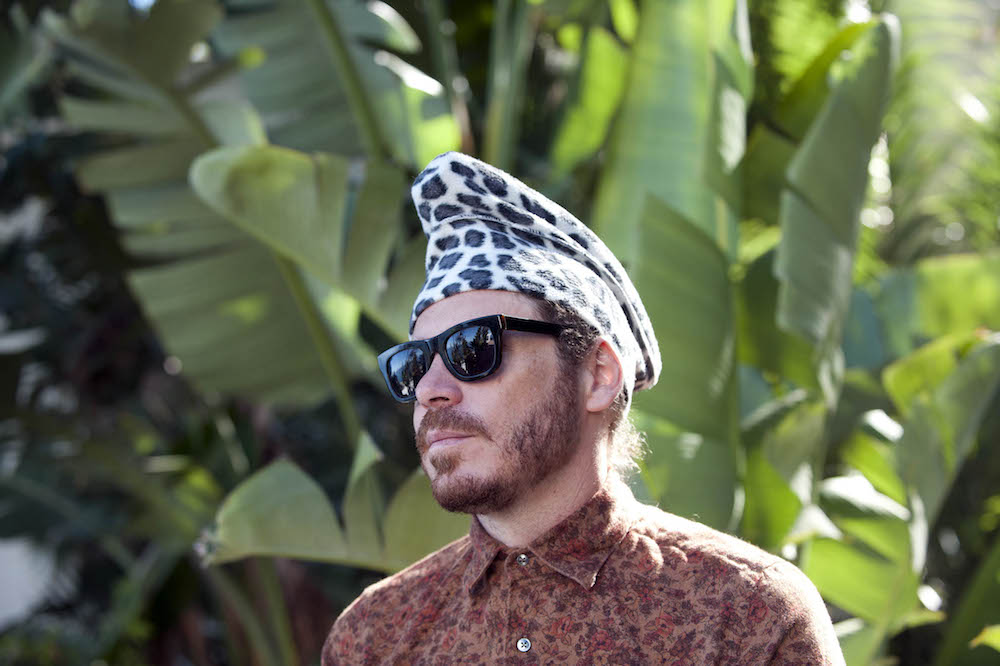Xander Ferreira from the music group Gazelle.
The famous face of a white musician accompanied a headline that read in part “invented rock ‘n roll”. It elicited a storm of protest on social media in mid-2014.
The American publication Variety, which titled a cover story “How Elvis invented rock ‘n roll 60 years ago”, later changed the headline when social media users, notably “black Twitter”, criticised it for overlooking the contribution of black musicians to rock ‘n roll. “The word ‘invented’ in the original headline has stirred an angry response from some readers who argue that it diminishes the contributions of many African-American musicians,” Variety said in the postscript to the article, which is now titled “How Elvis sparked the rock ‘n roll era on July 5 1954”.
Elvis “didn’t invent anything”, Atlantic‘s Noah Berlatsky said in response to the article. “By the time Elvis showed up at Sun Records, numerous other performers like Ike Turner, Ruth Brown, Ray Charles, Big Mama Thornton and Fats Domino had already released early rock songs.” It was this type of “whitewashing” in music that set much of the tone for 2014. From movies to awards ceremonies, music with traditionally black roots had white faces plastered all over it in the mainstream.
White rapper-producer duo Macklemore & Ryan Lewis won a Grammy award for best rap performance, beating wordsmiths Kendrick Lamar, Drake and veteran rapper Jay Z. The American Music Awards saw fit to present Australian musician Iggy Azalea with two prizes for favourite artist and album in the rap category, overlooking a long list of talented black rappers. This year, Madonna used defaced images of dead struggle heroes such as Nelson Mandela and Martin Luther King to promote her latest album, Rebel Heart, angering many black people.
Cultural appropriation is not new, Nesrine Malik wrote in the Guardian about Madonna’s #Rebelheart stunt, “we’re just noticing it more. That’s because those who are piggybacking on others’ journeys do not only have more channels to flaunt their cluelessness and sense of entitlement … but they are also being called out on it more.”

Afrikaans rapper Jack Parow. (Gallo Images)
Further south, a few white musicians have recently been linked to appropriating music and gaining commercial success from it. Last year Cape Town-born Afrikaans rapper Jack Parow became one of the faces for Cell C’s summer TV ad campaign, in which he sells the dream of being a hip-hop superstar to a young black boy. The rapper flashes a commercial hip-hop lifestyle in a style reminiscent of music videos by black American stars such as Rick Ross or super-rap group Rich Gang.
Rave hip-hop group Die Antwoord, who are on tour for their 2014 album, Donker Mag, on two occasions this month used the word “nigga” – on an invitation to their show and in the caption of leadman and rapper of the group on Ninja’s Instagram account.
“Someone please tell @rotgot23 [Ninja aka Watkin Tudor Jones] that we love and respect him, but he can only use the word ‘nigga’ when he’s talking to HIS circle of black friends. Not Instagram. Pliz!” wrote South African rapper Reason on social media.
Die Antwoord and Parow have been accused of “blackface” and cultural appropriation. Both have bottled and sold a particular brand of music and culture. The two music outfits are recognised as the originators of zef culture, which parodies aspects of the white working class, yet they are influenced by black cultural stereotypes.
The author of Static: Race and Re-presentation in Post-Apartheid Music, Media and Film, Adam Haupt, referring to Ninja’s lyrics in the song Enter the Ninja, says the rapper uses “terms and expressions associated with Cape Flats gangster-speak”.

Die Antwoord’s Watkin Tudor Jones aka Ninja. (Gallo Images)
Despite Die Antwoord and Jack Parow satirising black and coloured culture, neither comes from those societies. “It is ironic that Jones, the crew’s founding member, is neither coloured nor white Afrikaans working class; rather, he is a well-resourced white, English-speaking South African,” Haupt writes.
‘Copycats get the fame’
Defining cultural appropriation, essayist and award-winning poet Rustum Kozain says it “captures the un-equal dynamic where originators are ignored and neglected and the copycats get the fame and money”. In the case of Die Antwoord, the three-person group has won awards, featured in Alexander Wang and Dior ad campaigns and were invited to open for Lady Gaga, an offer they turned down. Tiger-print cap-wearing Parow, who opened for rapper Eminem last year, has scored financially.
Posing the question “But how successful is Jack Parow, really?” in a Men’s Health February 2014 article, the magazine notes that “Parow’s first album did platinum [40 000 units], the second did gold and when this one [Parow’s 2014 album Nag van die Lang Pette] goes double platinum he says he’ll buy another house.”
Emile Lester Jansen, known as Emile YX from the legendary hip-hop group Black Noise, says: “This is what white folks have been doing forever. They find something, they take it, they patent it, they make it their own and they make money from it.” Black Noise, one of the oldest active hip-hop acts in South Africa, forms part of other Cape Town hip-hop acts such as Brasse vannie die Kaap and Prophets of the City, who, despite receiving accolades, have not seen as much commercial success as their white successors.

Emile Lester Jansen (Emile YX) from hip-hop crew Black Noise. (David Harrison, MG)
For Jansen, white acts making money based on traditionally black culture is multilayered. “Cultural appropriation is the manifestation of a sense of entitlement to speak on behalf of other people and to steal other people’s culture,” he says.
The rapper and founder of the nongovernmental organisation Heal the Hood also says this type of appropriation “is not something new”. “We’re talking about Elvis Presley often getting recognised as rock ‘n roll’s creator over Chuck Berry. And that the biggest Zulu artist known globally is Johnny Clegg, while the most famous rap artist is Eminem, not because he’s good but because white people are unfortunately the victims of a handful of white people that made them believe that they’re superior.
“So the economic benefits that go with that are slanted to better that [white] society. So, despite it being a white thing, it’s also really a money thing.”
Abandoning stereotypical Afrikaans imagery
The front man of the avant-garde electro Afrikaans band Gazelle, Xander Ferreira, agrees. “If you look at the numbers in South Africa, the musicians that make the most money are usually white, Afrikaans pop musicians, because white Afrikaans people pay for music.” Ahead of the launch of Gazelle’s final album, The Rise and the Fall of an Empire, images of Ferreira, with one leg high in the sky – like the gita in traditional Zulu dance – wearing regalia reminiscent of then-Zaire ruler Mobutu Sese Seko, pepper social network timelines. For a white Afrikaans man who grew up on a farm in Limpopo, this imagery is far removed from stereotypical khaki outfits and sokkie treffers (popular hits).
But for Ferreira, who makes up Gazelle with band member Nick Matthews, his music style and aesthetic, which are both influenced by traditionally black culture, are not simply put down to cultural appropriation. “It takes a lot of guts for Afrikaans musicians to go against the grain and be culturally revolutionary,” he says about abandoning stereotypical Afrikaans imagery, which he believes “is related to a period of oppression”.
In a 2011 interview with the Mail & Guardian, the singer said the black culture he references in his craft is “who I am”. “I had more black people around me until I was 13 than white people. Imagine the woman who brought you up, bathed you every day, you’ve got a heavy connection with her and with her culture. When you were a baby you heard her music. It became a part of your culture.
“Fuck man! I ate pap with my hands when I was a three-year-old.” The artist and musician, who is based in New York, is in Cape Town before touring the country. In the PR for the performances, the images of the band that circulate online read “white man selling black culture”.
But Ferreira, who says he “tries to make music that is accessible to everyone”, claims that the sound and look of musicians like Parow and Gazelle denote an identity crisis he believes many white Afrikaans youth are experiencing. Being influenced by black culture, he believes, speaks to “a shift in young white Afrikaner identity … I think any white person in South Africa would have an identity crisis. I’m the 10th generation born in Africa, so I don’t have any connection with European culture, or European family or a passport.”

Front man of the avant-garde Afrikaans band Gazelle, Xander Ferreira. (David Harrison, MG)
And songs such as Gazelle’s Die Verlore Seun, in which Ferreira croons about leaving the farm for the bright city lights, point to what Rhodes University academic Sonja Smit describes as “an alternative construction of whiteness, which challenges the homogenous positionality ascribed to white male identity” in her essay Jack Parow: “Reinventing Representations of White Male Identity in Post-apartheid Popular Performance Practices”.
Besides noting the importance of the fact that young white Afrikaners like Ferreira can relate better to some aspects of black culture than to conservative white Afrikaans culture, it is also essential to note the power dynamics that come with being white and using white privilege to adopt or appropriate from marginalised people. Haupt says in a Guardian article published in 2012 that white privilege provides bands such as Die Antwoord, Gazelle and Jack Parow with “the means to ‘borrow’ from aspects of black cultural expression”.
Erasing the brown-faces
Besides appropriation attempting to erase the brown-faced originators of a culture, it also perpetuates the white gaze on the “other” and reinforces negative black stereotypes. In the case of Die Antwoord using prison dialect and tattoos, the band perpetuate hackneyed ideas that coloured people are dangerous and violent. Apart from that, the band also “evoke associations with coloured gang culture without actually confronting the gritty detail of township life under the shadow of gangs”, Haupt writes.
It is the white privilege in cultural appropriation that “remains an exploitation along unequal lines”, says Kozain, whose 2010 critique of Die Antwoord’s use of blackface has been cited by website Africa’s a Country. Kozain also refers to the Cape Town collective Dookoom, who last year released the controversial song Larney Jou Poes, which points to injustices on Western Cape farms.
“Unfortunate as it is, though, you can’t police nor stop appropriation. Best is to live with it. Or steal back. Better yet, steal before someone else does. Of course, Dookoom sampling some of [South African accordionist] Nico Carstens’s music is not going to have the same charge as Die Antwoord sampling some [traditionally Cape coloured music] goema, but you can’t tell an artist what not to use.”